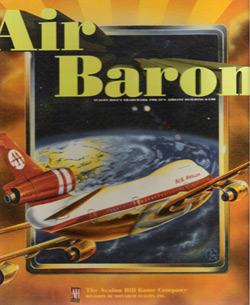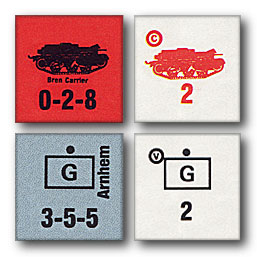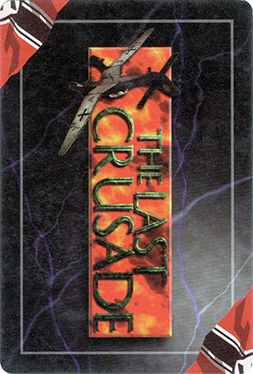
Mahjong or mah-jongg is a tile-based game that was developed in the 19th century in China and has spread throughout the world since the early 20th century. It is played by four players. The game and its regional variants are widely played throughout East and Southeast Asia and have also become popular in Western countries. The game has also been adapted into a widespread online entertainment. Similar to the Western card game rummy, mahjong is a game of skill, strategy, and luck. To distinguish it from mahjong solitaire, it is sometimes referred to as mahjong rummy.

A wargame is a strategy game in which two or more players command opposing armed forces in a simulation of an armed conflict. Wargaming may be played for recreation, to train military officers in the art of strategic thinking, or to study the nature of potential conflicts. Many wargames re-create specific historic battles, and can cover either whole wars, or any campaigns, battles, or lower-level engagements within them. Many simulate land combat, but there are wargames for naval, air combat, and cyber as well as many that combine various domains.
The fog of war is the uncertainty in situational awareness experienced by participants in military operations. The term seeks to capture the uncertainty regarding one's own capability, adversary capability, and adversary intent during an engagement, operation, or campaign. Military forces try to reduce the fog of war through military intelligence and friendly force tracking systems.
A random encounter is a feature commonly used in various role-playing games whereby combat encounters with non-player character (NPC) enemies or other dangers occur sporadically and at random, usually without the enemy being physically detected beforehand. In general, random encounters are used to simulate the challenges associated with being in a hazardous environment—such as a monster-infested wilderness or dungeon—with uncertain frequency of occurrence and makeup. Frequent random encounters are common in Japanese role-playing games like Dragon Quest, Pokémon, and the Final Fantasy series.

A contour line of a function of two variables is a curve along which the function has a constant value, so that the curve joins points of equal value. It is a plane section of the three-dimensional graph of the function parallel to the -plane. More generally, a contour line for a function of two variables is a curve connecting points where the function has the same particular value.
Warlords is a video game series created by Steve Fawkner, in which role-playing elements are combined with turn-based strategy in a fantasy setting. The series began with Warlords in 1990 and includes three other games, two expansion packs, and several spinoffs.
In tabletop games and video games, game mechanics are the rules or ludemes that govern and guide the player's actions, as well as the game's response to them. A rule is an instruction on how to play, a ludeme is an element of play like the L-shaped move of the knight in chess. A game's mechanics thus effectively specify how the game will work for the people who play it.

Warlords IV: Heroes of Etheria is a turn-based strategy video game developed by Infinite Interactive and published by Ubi Soft. It is the fourth in the Warlords series.

Squad Leader is a tactical level board war game originally published by Avalon Hill in 1977. It was designed by John Hill and simulates on infantry combat in Europe during World War II. One of the most complex war games of its time, Squad Leader is the natural extension of the trend towards greater realism initiated by several earlier games, including Avalon Hill's own PanzerBlitz and Panzer Leader. Those two earlier games were slightly larger in scope, with counters representing platoons and map hexes measuring 250 metres across, compared to Squad Leader's 40 meter hexes and squad sized units.

Greyhawk Wars is a fantasy board wargame that was published by TSR, Inc. in 1991. The game was designed by David Cook as a strategic simulation of the eponymous Greyhawk Wars on the fictional world of Oerth, the World of Greyhawk campaign setting for the Dungeons & Dragons role-playing game.

The Russian Campaign is a strategic board wargame published by Jedko Games in 1974 that simulates combat on the Eastern Front during World War II. Avalon Hill later bought the game and produced several editions.

Air Baron is an economic strategy game published by Avalon Hill in 1996. Despite its family-oriented marketing, Air Baron plays far more like a wargame than a typical family money-driven game like Monopoly. Air Baron is for two to six players, adjusting the playable area and victory conditions accordingly.
Turn-based tactics (TBT) is a video game genre of strategy video games. They are turn-based simulations of operational warfare and military tactics in generally small-scale confrontations as opposed to more strategic considerations of turn-based strategy (TBS) games. Turn-based tactical gameplay is characterized by the expectation of players to complete their tasks using only the combat forces provided to them in a generally realistic manner.
Real-time tactics (RTT) is a subgenre of tactical wargames played in real-time, simulating the considerations and circumstances of operational warfare and military tactics. It is differentiated from real-time strategy gameplay by the lack of classic resource micromanagement and base or unit building, as well as the greater importance of individual units and a focus on complex battlefield tactics.

A counter is usually a small cardboard square moved around on the map of a board wargame to represent relevant information or determine certain things. The first wargame based on cardboard counters was War Tactics or Can Great Britain Be Invaded? invented by Arthur Renals of Leicester in 1911. The first wargame bringing counters to a mass-market was Tactics, invented by Charles S. Roberts in 1952. Traditional wargames typically have hundreds of counters. Squad Leader had counters of different sizes: 520 1⁄2-inch counters and 192 5⁄8-inch, with the different sizes used for different purposes.

The Last Crusade is an out-of-print collectible card game originally published in December 1995 by Virginia-based Chameleon Eclectic Entertainment until the company closed in early 1999, at which time Pinnacle Entertainment Group took over production.
Diskwars is a collectible fantasy tabletop miniature wargame designed primarily by Tom Jolly and Christian T. Petersen and first published in 1999 by Fantasy Flight Games.
In video games and other games, the passage of time must be handled in a way that players find fair and easy to understand. This is usually done in one of the two ways: real-time and turn-based.
Realm of the Jade Goddess is a German-style board game designed by Klaus Teuber and published in 2007 by Kosmos in Germany. It was originally available in limited release, and there has been no plans to release an edition for other languages.

Heroscape is an expandable turn-based miniature wargaming system originally manufactured by Hasbro subsidiaries from 2004 until its discontinuation in November 2010. Geared towards younger players, the game is played using pre-painted miniature figures on a board made from interlocking hexagonal tiles, allowing for the construction of an interchangeable and variable 3D landscape. This system and the relatively high production quality of the game materials have been lauded by fans even years after the game was discontinued, eventually leading to its revival in 2024.










